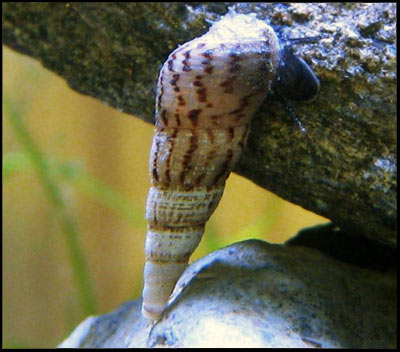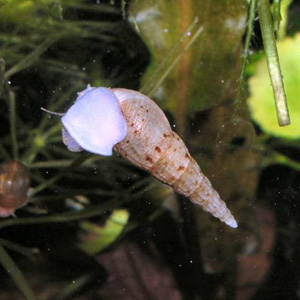Habitat and Parasitic Species.
Red-rimmed melani's native is southern Asia and Northern Africa (Boone, 2002). It was introduced to many other parts of the world, including the us through the aquarium trade (Benson, 2013). This aquatic hitchhiker as been found all over the united states, this can be partly attributed to people not cleaning their boats and scientific equipment when they leave an area and it can be transported to different lakes and establish colonies there as well (Benson, 2013). They have also been linked to outcompeting native species for food and places to live (Benson, 2013).

Another reason this snail is a dangerous species, besides outcompeting native species is that it can have a direct effect on humans, due to it’s an extremely good host for a variety of parasites (Murray, 2008). These parasites use the snail as there intermediate host for the larvae to develop as part of their indirect life cycle with intermediate host, the second host is usually some sort fish or crab. Humans usually get infected by this parasite by eating undercooked or raw fish. (Murray, 2008). There are also parasites that do not include the Red-rimmed melania as part of their life cycle, but are still a major cause for concern (Murray, 2008). In the above right picture the life cycle of the nematodes are shown with the snail as an intermediate host.
These species of snail can absolutely take over an entire microclimate, mainly because they can reproduce asexually, so a single snail can repopulate a new area; they have been found in densities of 10,000 per square meter (Murray, 2008).
In its native habitat it is primarily a freshwater snail, but in areas of the U.S. such as Florida it with brackish water it has been adapting to these brackish conditions, and being able to survive with surprising results (Murray, 2008). Test to discover the extent of salinity that the red-rimmed melania can endure was done with disturbing results, one of the experiments showed that none of the adults died as a result of a 6 week exposure to increasing salinity; what is even more astounding is that the juveniles were introduced during the second week, and all of them survived (Murray, 2008). This was even when one of the tanks reached very extreme salinity conditions, and they still survived (Murray, 2008).

